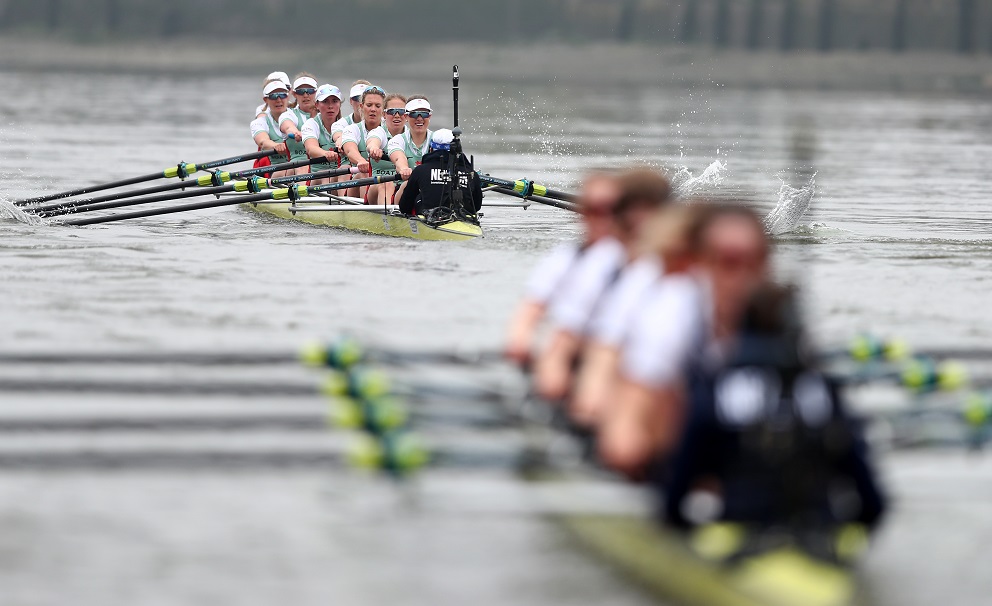
RIVER RIVALS: History of the Boat Race
RIVER RIVALS: History of the Boat Race
The Boat Race between Oxford and Cambridge has been causing a buzz for centuries. We look at how it all started…
The year was 1829, and the summer particularly humid. 21-year-old Charles Merivale had decided against pursuing a career in the Indian civil service and, having enrolled at Cambridge was on his way to soon be ordained a deacon. He kept in touch with his old schoolfriend, Charles Wordsworth (a nephew of *the* Wordsworth) who in turn had chosen academic pursuits at Oxford, and having heard of his mate’s alma mater’s sporting successes, challenged him to a rowing race at Henley-on-Thames. Other members of the Cambridge rowing club – established merely two years earlier – happily obliged. Although Wordsworth’s father “desired (him) not to row any more, simply from anxiety lest (his) health should suffer”, the young man’s pride at being one of Oxford’s foremost athletes prevailed and after obtaining an appropriate note from the physician and going on a bizarre diet consisting of “under-done beefsteak, porter, dry bread, no butter, no tea, no vegetables”, he was ready to go. Both Wordsworth and Merivale rowed at number four.
On June 10, both crews faced each other by a 2.25-mile stretch of the River Thames between Hambleden Lock and Henley Bridge. The race turned out to be a marketing success, too, with around 20,000 people watching. Oxford won “easily” (that’s in the official records) although by how much exactly is not known. No attempt was made to race again until 1834 – but then no agreement could be reached as to the preferred place convenient for both teams for a further two years. Finally, both teams managed to meet in the Star and Garter pub in Putney on 16 June 1836 and plans were made to race
on the following day. Oxford was sporting dark blue, as they did seven years earlier. Cambridge adopted their light blue colours for the first time, having attached an Eton blue ribbon to the bows of the boat. The day wasn’t anywhere near as pretty as in 1829, with rain descending in torrents. Cambridge won, and by a lot, outclassing their rivals by approximately 20 lengths. This levelled the series at 1–1.
Following the formation of the Oxford University Boat Club, racing resumed in 1839, first held intermittently and then annually since 1856, except for the two World Wars and the Covid-19 pandemic. 1845 was the first time the race was staged along The Championship Course, from Putney to Mortlake – its shape is so iconic it even went down in medicine – in orthopaedic surgery, an “S” shaped incision along the crease of the elbow is commonly referred to as “a boat-race incision” resembling the River Thames from Putney to Mortlake.
Four years later, a semi-serious collision occurred which marked the only time a team (in this case, Oxford), won on a foul and another was disqualified. Sinkings were not uncommon, though. In 1859, gale-force winds and rough waters sunk the Cambridge boat. In 1898, history almost repeated itself when Cambridge became waterlogged in inclement conditions. In 1912, both boats sank and the race had to be rescheduled for the following day. 1877 saw by far the most controversial race to this day – the only one that had finished in a dead heat. “Honest” John Phelps who acted as a finishing judge considered that the boats were essentially level with each surging forward during the stroke cycle. Not having any clear way to determine who reached the finish line first – as the finishing posts had not been introduced yet – pronouncing a dead heat seemed like the only reasonable solution.
The first radio coverage was on 2 April 1927, the same year that the inaugural Women’s Boat Race was contested, with Oxford securing the victory. In 2003, the closest finish ever was recorded, with Oxford winning by only one foot. 2021 saw the race move, due to the pandemic – Cambridge and Oxford faced each other on the River Great Ouse.
In 1938, the new BBC Television Service covered The Boat Race for the first time. Today, 250,000 people spectate from the banks of the river, with 15 million or more watching it on television. Meanwhile, the Putney riverside will forever be associated with rowing. Its historic boat clubs still line the banks including the Thames Rowing Club, which was founded in 1860 by a group of men, chiefly clerks and salesmen in the city rag trade. In 1973 Thames voted to accept women as members and the United Universities Women’s Boat Club moved into the boathouse. The club quickly became a powerhouse of women’s rowing, sending athletes to compete at every Olympic Games from Los Angeles to Beijing.
Image credit: Boat Race Company Limited, Women’s Boat Race 2019






